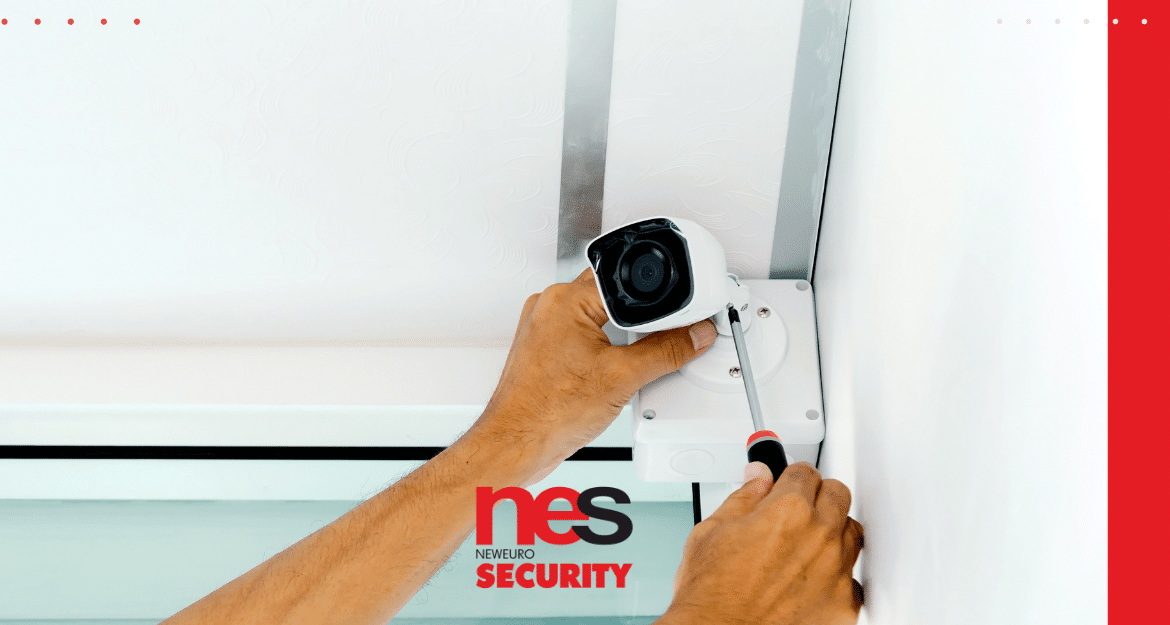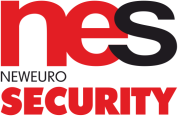Surveillance technology has evolved significantly over the years, and CCTV (Closed-Circuit Television) systems stand at the forefront of modern security solutions. CCTV systems provide a watchful eye that spans various environments, from homes to businesses and public spaces. In this guide, we’ll delve into the inner workings of CCTV systems, shedding light on their components, functionality, and the benefits they bring. Moreover, we’ll explore the role of NES Security, a trusted partner in the United Kingdom, in delivering tailored CCTV solutions that align with your security needs.
CCTV Systems
CCTV systems are a network of cameras that capture and transmit video footage within a closed circuit. These systems play a crucial role in deterring and documenting security incidents, providing a valuable layer of protection for both residential and commercial spaces.
Components of a CCTV System
A CCTV system comprises several key components that work seamlessly together to create a comprehensive surveillance solution. Cameras, video recorders, monitors, cables, and control systems are integral parts of the setup.
Camera Functionality and Types
Cameras are the eyes of the CCTV system, available in various types such as dome cameras, bullet cameras, and PTZ (pan-tilt-zoom) cameras. They capture visual information within their field of view and transmit it to other components for processing.
Image Capture and Processing
Cameras capture video footage and send it to video recorders or central processing units. Modern cameras offer high-resolution images, enabling clear and detailed monitoring.
Transmission of Video Signals
Video signals are transmitted through cables or wirelessly to recording devices and monitors. Wired connections are reliable and secure, while wireless solutions offer flexibility in camera placement.
Recording and Storage
Video recorders, whether Digital Video Recorders (DVRs) or Network Video Recorders (NVRs), store the captured footage. This stored data is essential for reviewing incidents and investigations.

Monitoring and Control
Monitors display live or recorded footage, enabling real-time monitoring. Control systems allow users to adjust camera angles, zoom, and other settings remotely.
Remote Access and Connectivity
Modern CCTV systems often feature remote access capabilities, enabling users to view live and recorded footage from smartphones, tablets, or computers. This connectivity enhances convenience and responsiveness.
Video Analytics and Intelligence
Advanced CCTV systems may incorporate video analytics, allowing for automated monitoring of specific events or behaviours. Motion detection, facial recognition, and object tracking are examples of video analytics.
Integration with Security Measures
CCTV systems can be integrated with other security measures, such as access control systems and alarms. This creates a holistic security environment that responds effectively to incidents.
Role of Professionals in CCTV System Management
CCTV systems require professional expertise for installation, configuration, and maintenance. Professionals ensure optimal camera placement, reliable connections, and accurate configuration for effective surveillance.
CCTV System Benefits and Considerations
CCTV systems offer numerous benefits, including crime deterrence, evidence collection, and peace of mind. However, privacy concerns and compliance with regulations must also be considered when implementing a CCTV system.
NES Security: Expertise in Designing and Implementing CCTV Systems
NES Security, based in the United Kingdom, is a trusted expert in delivering tailored security solutions, including CCTV systems. Their professionals understand the nuances of CCTV installation, ensuring optimal camera placement, effective connectivity, and seamless integration with your security ecosystem.
Empowering Your Security with NES Security
When you partner with NES Security, you’re not just acquiring equipment; you’re gaining access to a comprehensive approach to security. From the initial assessment to the final installation, NES Security’s experts meticulously design and implement CCTV systems that suit your specific needs. Whether it’s safeguarding your home, business, or public space, NES Security’s commitment to excellence ensures that your security infrastructure stands strong, providing a watchful eye when you need it the most.
Cameras: The Watchful Eyes of Security
Cameras are the foundation of any CCTV system, capturing visual information that serves as a vigilant record of activities within the surveillance area. Their functionality is key to the effectiveness of the entire system.
Camera Types and Varieties
CCTV cameras come in a diverse range of types and styles, each designed to serve specific purposes. Understanding the different camera types helps in selecting the right ones for your security needs.
1. Dome Cameras: Dome cameras are characterised by their compact and discreet design. They offer a wide field of view and are often used in indoor environments where aesthetics and visibility matter.
2. Bullet Cameras: Bullet cameras are typically cylindrical and are easily recognizable due to their elongated housing. They are commonly used for outdoor surveillance and can have features such as infrared night vision.
3. PTZ Cameras: Pan-tilt-zoom cameras are versatile devices that allow operators to control the camera’s movement remotely. These cameras can pan (rotate horizontally), tilt (move vertically), and zoom in or out to focus on specific areas.
4. Box Cameras: Box cameras are a traditional type of CCTV camera that provides exceptional image quality. They are often used in locations where visibility and image clarity are paramount.
5. Thermal Cameras: Thermal cameras use infrared technology to detect heat signatures rather than visible light. They are ideal for scenarios with low visibility, such as in complete darkness or through fog.
Camera Functionality and Features
Modern CCTV cameras are equipped with advanced features that enhance their functionality and effectiveness. These features ensure that cameras can capture high-quality images and adapt to various environmental conditions.
1. Image Resolution: High-resolution cameras capture detailed images, making it easier to identify individuals and objects within the surveillance area.
2. Infrared (IR) Night Vision: IR night vision allows cameras to capture images in low-light or complete darkness using infrared illumination.
3. Wide Dynamic Range (WDR): WDR cameras can balance exposure levels in scenes with both bright and dark areas, ensuring that details are visible in challenging lighting conditions.
4. Motion Detection: Cameras with motion detection can trigger alerts or record when movement is detected within their field of view.
5. Facial Recognition: Advanced cameras with facial recognition technology can identify and match faces against databases, enhancing security in high-traffic areas.
Image Capture and Processing: The Digital Bridge
Once cameras capture visual information, the data undergoes processing before being transmitted and stored. This phase ensures that the captured images are of high quality and compatible with the recording and monitoring systems.
Image Capture and Sensor Technology
Cameras capture images using image sensors, with two main types being Charge-Coupled Devices (CCD) and Complementary Metal-Oxide Semiconductors (CMOS). These sensors convert light into electronic signals, forming the basis of the captured image.
Image Processing and Enhancement
Before transmission, captured images may undergo processing to enhance quality. This can include adjusting contrast, brightness, and colour balance to optimise image clarity.
Transmission of Video Signals: Connecting the Dots
The captured and processed video signals need to be transmitted to other components of the CCTV system for further processing, storage, and monitoring. How this transmission occurs affects the quality and reliability of the entire system.
Wired Transmission
Wired transmission involves the use of cables to transmit video signals. Common types of cables used in CCTV systems include coaxial cables and Ethernet cables (such as Cat5e or Cat6).
1. Coaxial Cables: Coaxial cables are commonly used for analogue CCTV systems. They are suitable for transmitting video over shorter distances.
2. Ethernet Cables: Ethernet cables are used in IP-based CCTV systems. They transmit data digitally and can support longer distances, making them suitable for larger surveillance areas.
Wireless Transmission
Wireless transmission eliminates the need for physical cables, offering flexibility in camera placement and reducing installation complexity.
1. Wi-Fi: Wi-Fi-enabled cameras transmit video signals wirelessly over local networks. This is ideal for areas where wired connections are impractical.
2. Cellular Networks: Some CCTV systems can transmit data using cellular networks, enabling remote monitoring in areas without Wi-Fi coverage.
Recording and Storage: Archiving Visual Data
Captured and transmitted video signals need to be recorded and stored for later review, analysis, and investigation. This recording phase is a critical aspect of any CCTV system, ensuring that valuable information is retained.
Recording Devices
CCTV systems use recording devices to store video footage. There are two primary types of recording devices: Digital Video Recorders (DVRs) and Network Video Recorders (NVRs).
1. Digital Video Recorders (DVRs): DVRs are used in analogue CCTV systems. They encode and compress video signals for storage on internal or external hard drives.
2. Network Video Recorders (NVRs): NVRs are used in IP-based CCTV systems. They process and store digital video data from IP cameras, offering scalability and advanced features.

Storage Capacity and Considerations
The amount of storage required depends on factors such as the number of cameras, video quality, and retention period. Larger storage capacity allows for longer retention of video footage.
1. Hard Drive Size: DVRs and NVRs come with varying hard drive sizes, ranging from a few terabytes to several terabytes.
2. Scalability: Some NVRs allow for the addition of external storage devices or expansion bays, providing scalability as your surveillance needs grow.
Monitoring and Control: Real-Time Oversight
Monitoring and control systems allow users to view live or recorded video footage, adjust camera settings, and respond to incidents in real time.
Monitors
Monitors are used to display video feeds from cameras or recorded footage. The size and number of monitors depend on the surveillance setup and the level of monitoring required.
Control Systems
Control systems provide a user interface to interact with cameras and other components. These systems enable users to adjust camera angles, zoom, and other settings.
1. On-Screen Display (OSD): OSD menus are overlaid on the video feed, allowing users to adjust camera settings directly from the monitor.
2. Joystick Controllers: Joystick controllers provide precise control over PTZ cameras. They allow operators to pan, tilt, and zoom with ease.
Remote Access and Connectivity: Anytime, Anywhere Monitoring
Modern CCTV systems often offer remote access capabilities, allowing users to view live or recorded footage from their smartphones, tablets, or computers.
Mobile Apps and Software
CCTV system manufacturers offer mobile apps and software that enable users to access their surveillance feeds remotely. These apps provide real-time monitoring and playback functionalities.
1. Live Viewing: Remote apps allow users to view live video feeds from cameras in real-time.
2. Playback and Archive Access: Users can access recorded footage from their mobile devices, enabling them to review past events.
Video Analytics and Intelligence: Automated Insights
Advanced CCTV systems incorporate video analytics technology, enabling automated monitoring and detection of specific events or behaviours within the surveillance area.
Motion Detection
Cameras with motion detection capabilities can trigger alerts or record when movement is detected within their field of view. This is particularly useful for detecting unauthorised access or unusual activities.
Facial Recognition
Some advanced CCTV systems feature facial recognition technology. This allows cameras to identify and match faces against databases, enhancing security in high-traffic areas or specific access points.
Integration with Security Measures: A Comprehensive Approach
CCTV systems can be integrated with other security measures, such as access control systems, alarms, and sensors. This integration creates a comprehensive security ecosystem that responds effectively to incidents.
Access Control Integration
Integrating CCTV systems with access control solutions allows operators to verify individuals before granting entry. Video feeds from cameras can be used to confirm the identity of individuals requesting access visually.
Alarm Integration
CCTV systems can be synchronised with alarms and sensors to trigger video recording or live monitoring when an alarm is activated. This provides visual context to security incidents.
Role of Professionals in CCTV System Management
CCTV systems require professional expertise at every stage, from design and installation to ongoing maintenance. Professionals ensure that the system is set up correctly and performs optimally.
Design and Installation
Professionals assess the surveillance area, determine camera placements, and design a system that covers critical areas while minimising blind spots.
Configuration and Calibration
Once installed, professionals calibrate cameras to ensure optimal image quality, adjust camera settings, and configure recording and storage parameters.
Maintenance and Upgrades
Regular maintenance ensures that cameras, recording devices, and other components are functioning correctly. Professionals can identify and address issues promptly.
NES Security: Your Expert Partner in CCTV Solutions
NES Security, located in the United Kingdom, is your trusted partner in designing, implementing, and maintaining CCTV systems that align with your security requirements.
Tailored Solutions
NES Security understands that every space has unique security needs. Their experts work closely with you to design a customised CCTV system that provides comprehensive coverage.
Professional Installation
Professionals from NES Security ensure that cameras are strategically placed for maximum coverage, optimal angles, and effective monitoring.
Seamless Integration
NES Security integrates your CCTV system with existing security measures, creating a cohesive security infrastructure that enhances protection.
Ongoing Support and Maintenance
NES Security provides ongoing support, ensuring that your CCTV system remains operational and effective. Regular maintenance helps prevent issues and ensures longevity.
Informed Decisions for Enhanced Security
NES Security’s commitment to excellence empowers you to make informed decisions about your security needs. With their expertise, you can rest assured that your CCTV system is designed, installed, and managed to deliver the highest level of security.
The Watchful Guardians of Security
CCTV systems have revolutionised the way we approach security. With their complex network of components and advanced features, they provide unparalleled monitoring, detection, and deterrence capabilities. From image capture and processing to remote access and integration with security measures, CCTV systems work cohesively to safeguard spaces and individuals.
NES Security stands as your ally in this journey. As a prominent security solutions provider in the United Kingdom, NES Security offers expertise, experience, and a commitment to delivering customised CCTV systems that align with your unique security needs. With NES Security by your side, you can embrace the power of surveillance technology, knowing that your safety is in capable hands.

